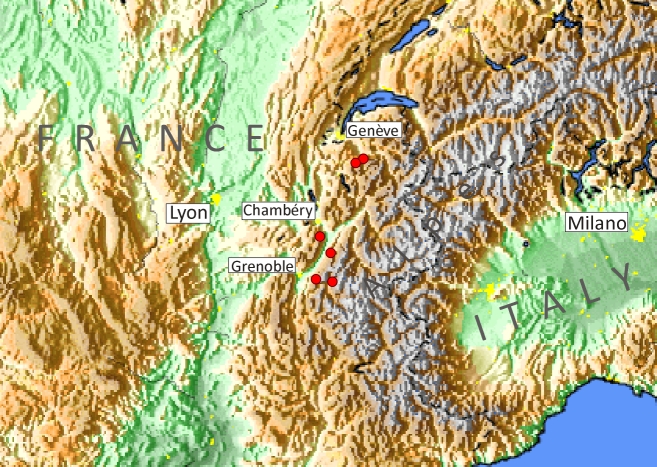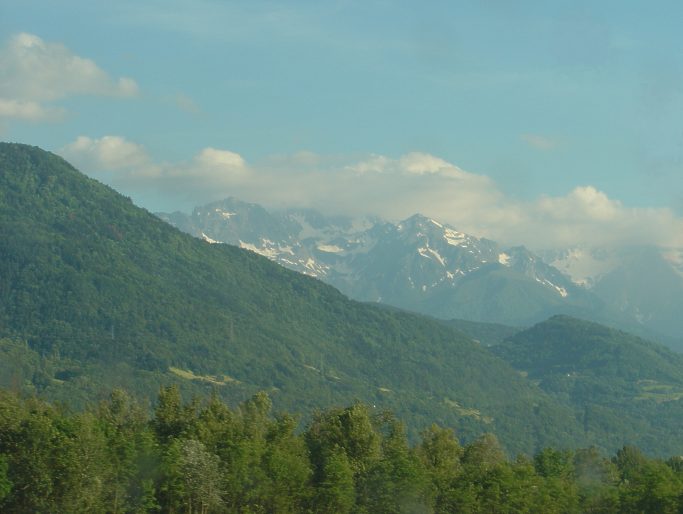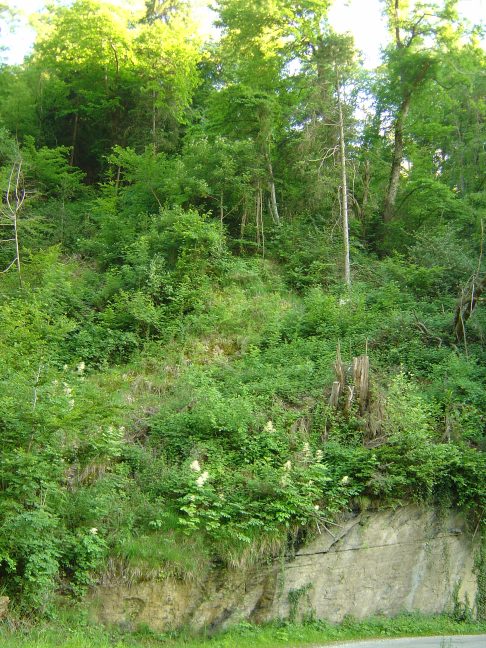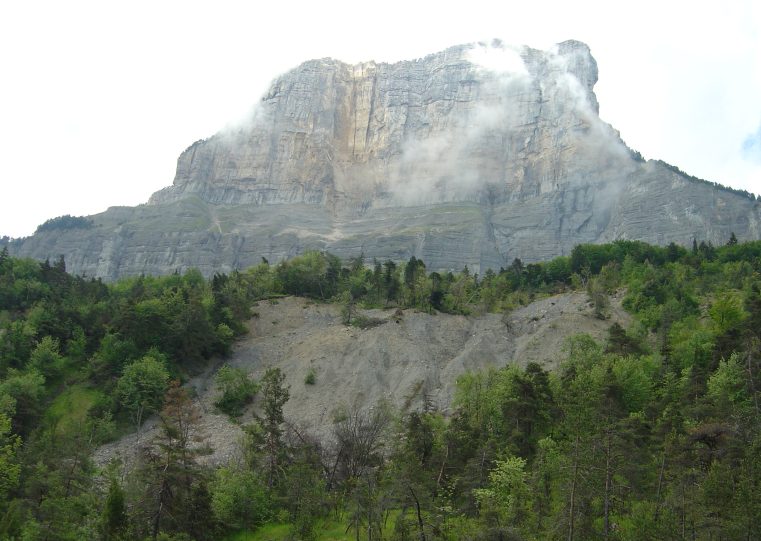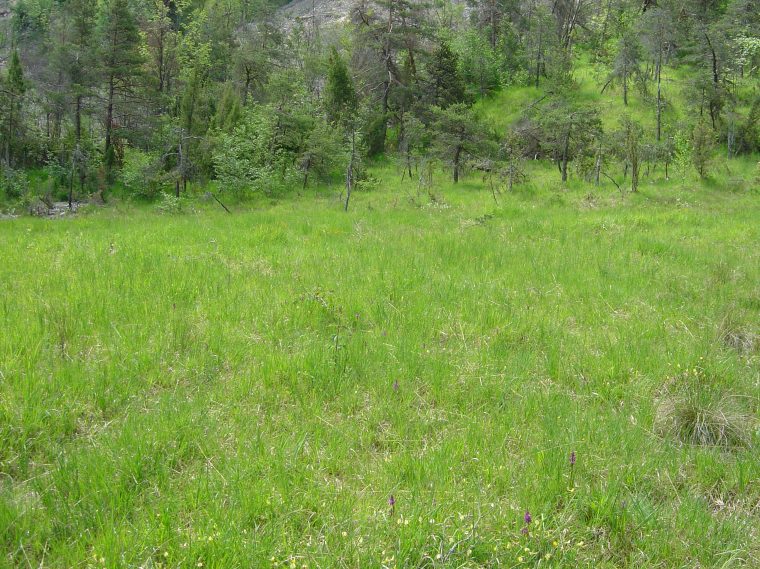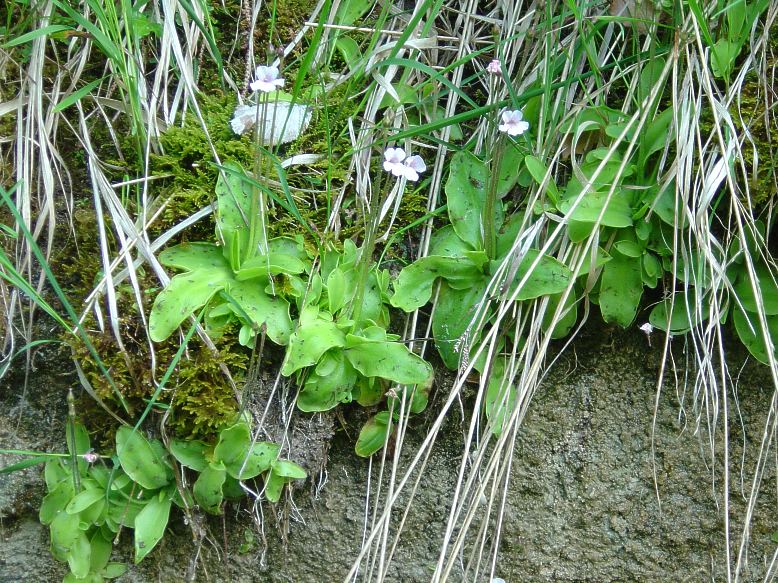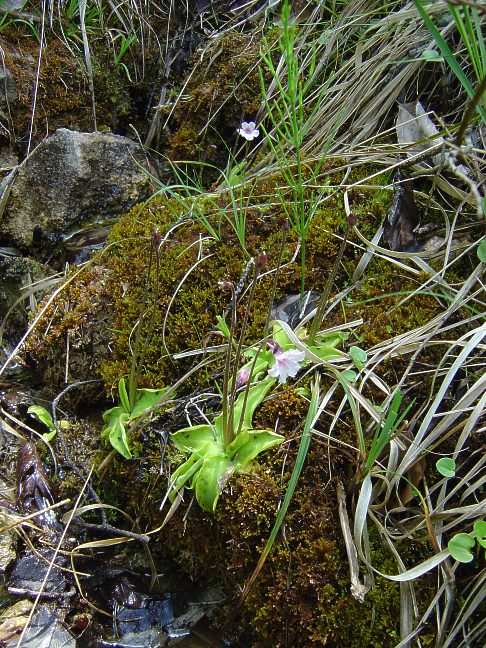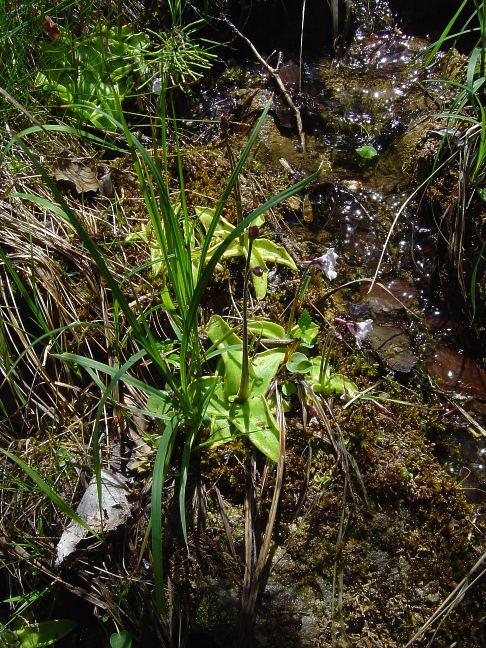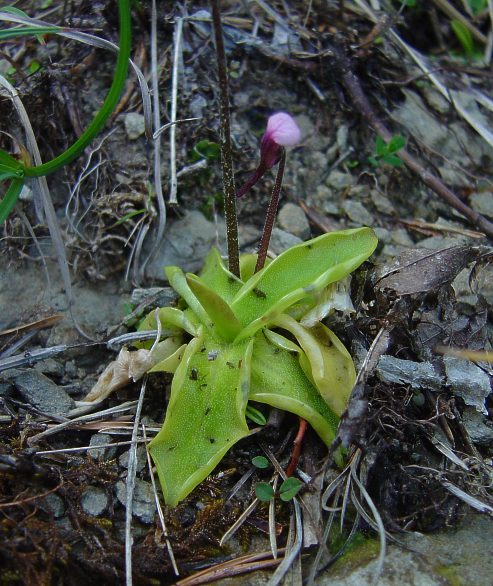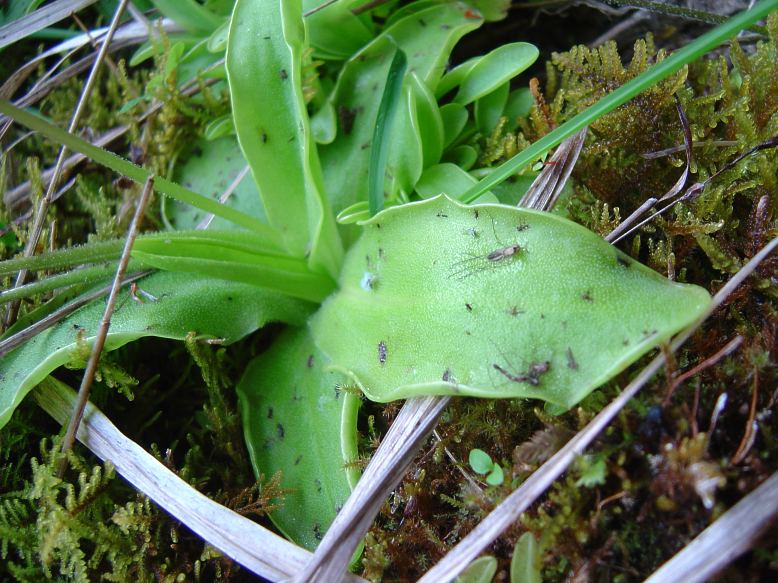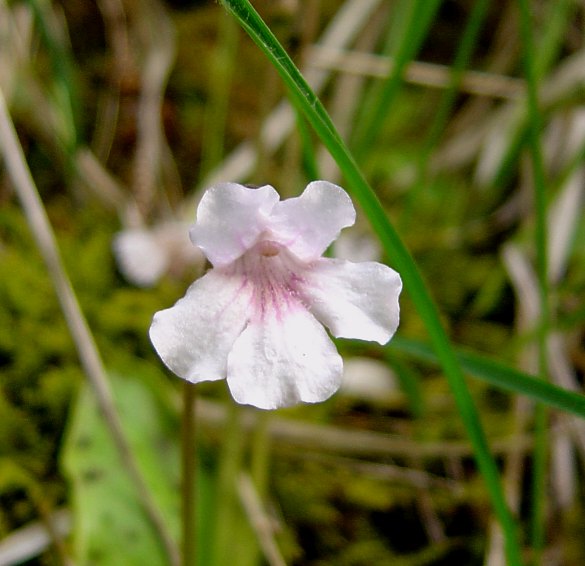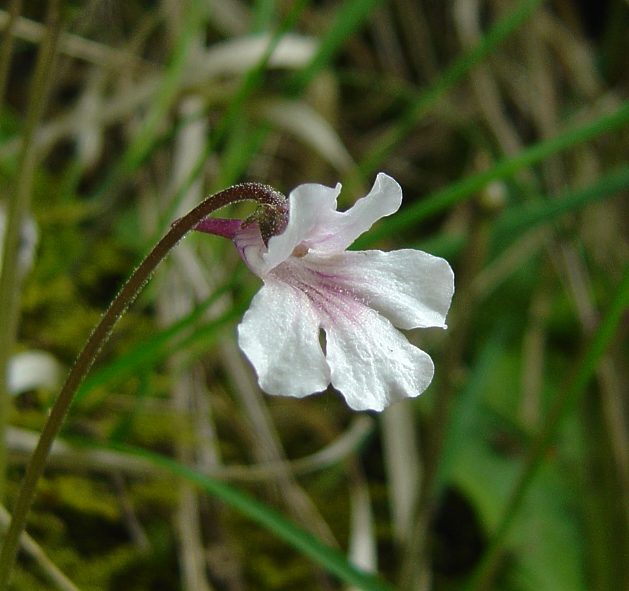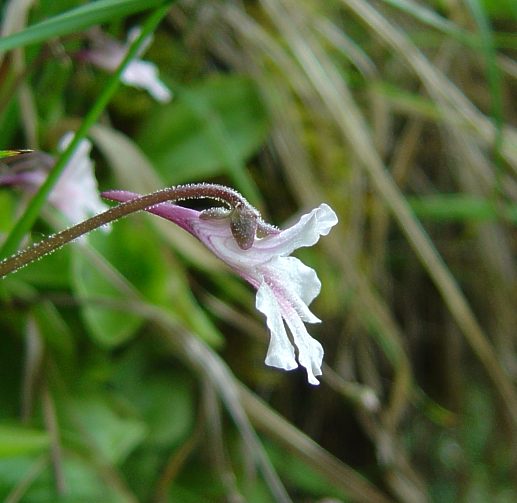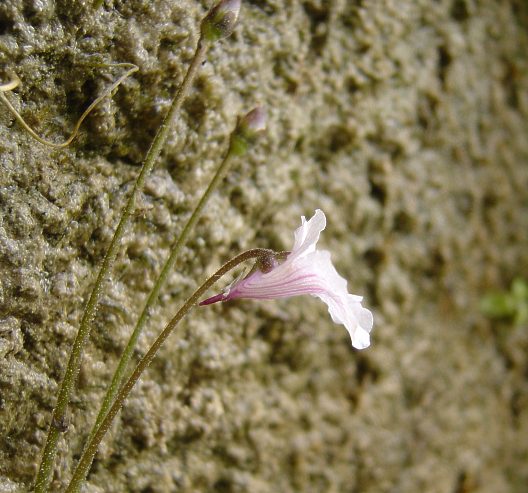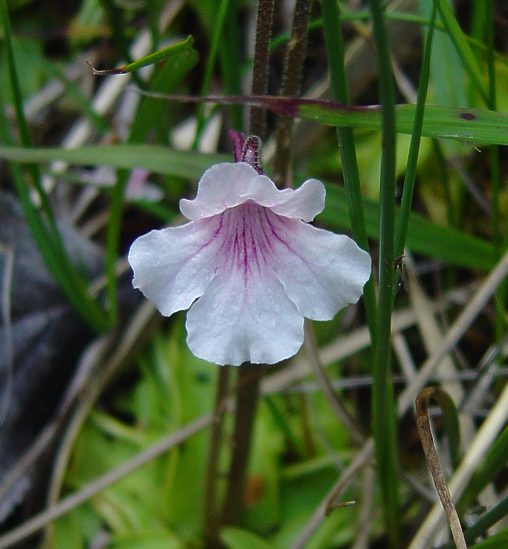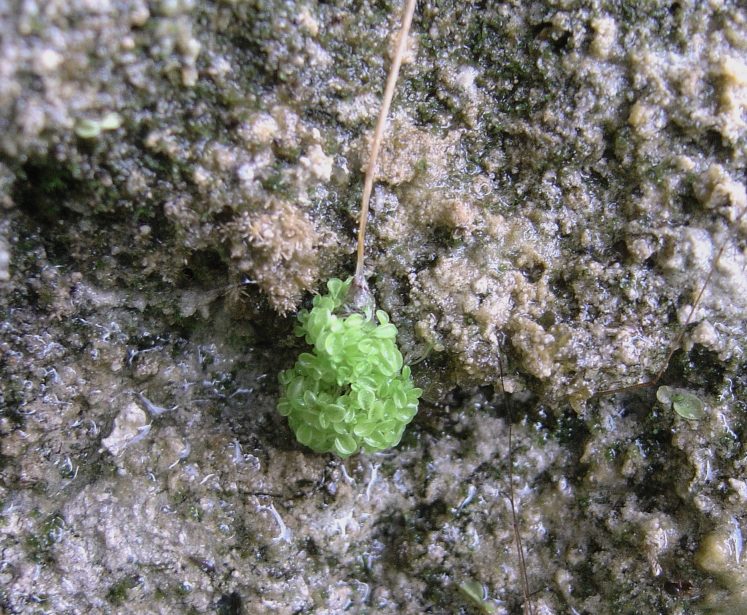
Oliver Gluch's World of Carnivorous Plants or: "What you always wanted to know about butterworts" |
| Impressum |

| Home | Origin | Prey | Species | Plant Purchase | Other Carnivorous Plants | Info about Carnivorous Plants | About me |
Pinguicula grandiflora ssp. rosea (Mutel) Casper (1962)The
French
botanist Pierre Auguste Victor Mutel described already
in 1830 a population from the French Savoyen Alps that
grew along the Grand Canal near Grenoble, which differed
in the flower form and flower coloration from the
typical P. grandiflora. In 1962 the German
botanist S. Jost Casper ranked these populations, that
were found in the meantime at other locations with the
same stable characters, as a subspecies under the
denomination ssp. rosea.
Plants
grow
either directly on wet, vertical limestone cliffs or in
wet meadows along small streams. This subspecies of P.
grandiflora was found only in the two French
departments Haute-Savoie and Isère in altitudes between
650 and 1400 m above sea level.
This
subspecies
differs from ssp. grandiflora by its smaller
flower, by its white to pale rose-pink coloration of the
corolla lobes, by the rose-pink tube covered with a
reddish veination, by the straight and awl-shaped spur
(mainly of a dark red or red-violet colour) and by the
short, oval-shaped lobes of the upper calyx lip.
If
the
following principles are respected a successful
cultivation of P. grandiflora ssp. rosea
in a cold greenhouse or outside is possible. As with all
temperate butterwort species you should keep the
substrate wet all year round, with a reduced watering
during the period when the plants have formed the
hibernaculum, otherwise there is a risk that the plants
would rot. To overwinter plants in a cold
greenhouse temperatures between 0 and 5° C are
recommended. Higher temperatures up to 10° C will be
tolerated by the plants, but there is a higher risk that
fungi would develop on the plants and may harm them and
plants will probably form summer leaves very early in
the year. To overwinter the winter buds in a fridge is
also an option, but then I would recommend treating the
hibernaculum with a fungicide against mould. If plants
are cultivated outside, a permanent freezing and thawing
of the substrate should be prevented, as then the
hibernaculum could move outside of the substrate and
would then dry out. Cultivation in pure peat is
possible. Good cultivation results can be achieved also
by using pure vermiculite. The latter has the advantage
that even under wet conditons the substrate still has
enough larger pores to secure a good aeration of the
roots.
|
